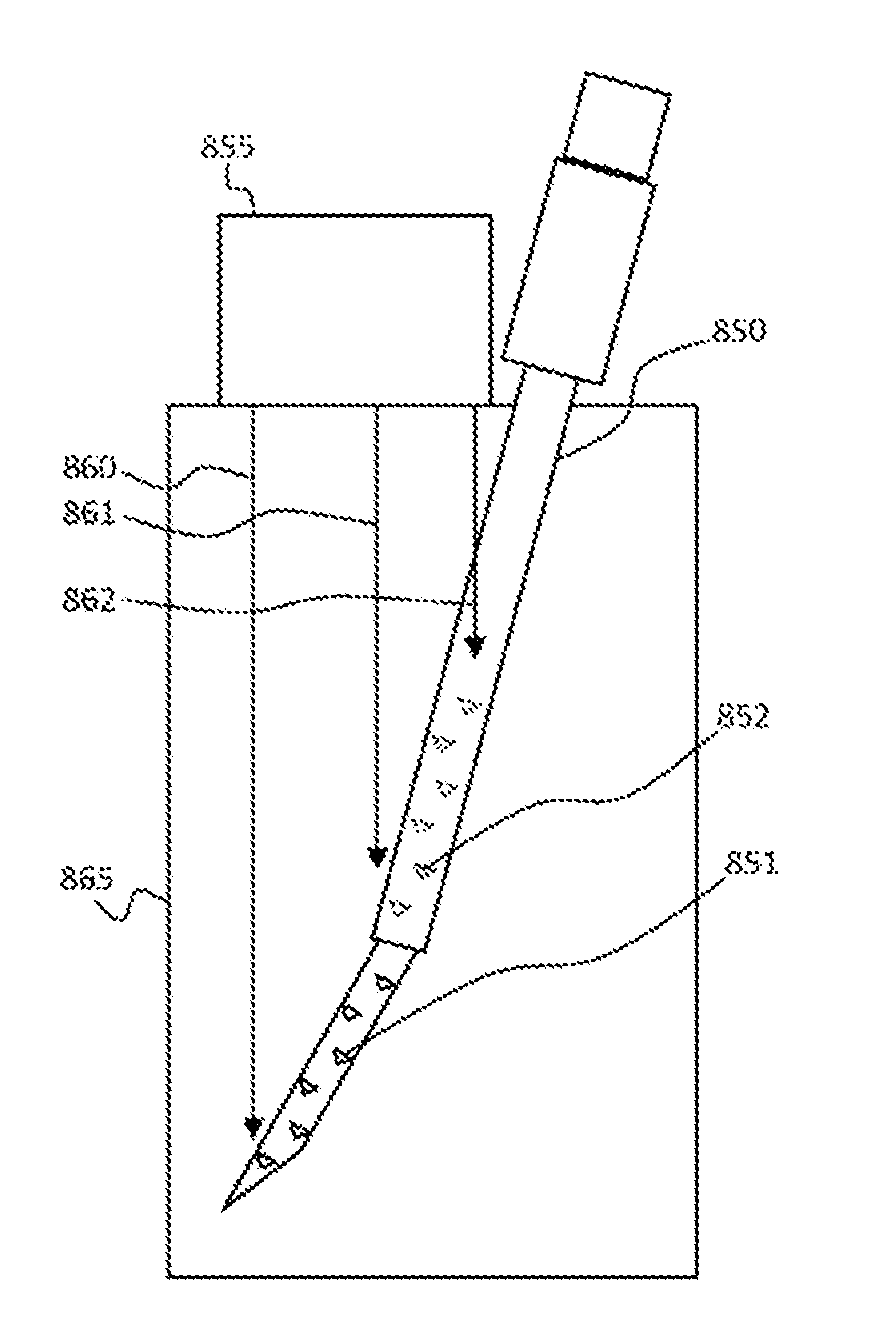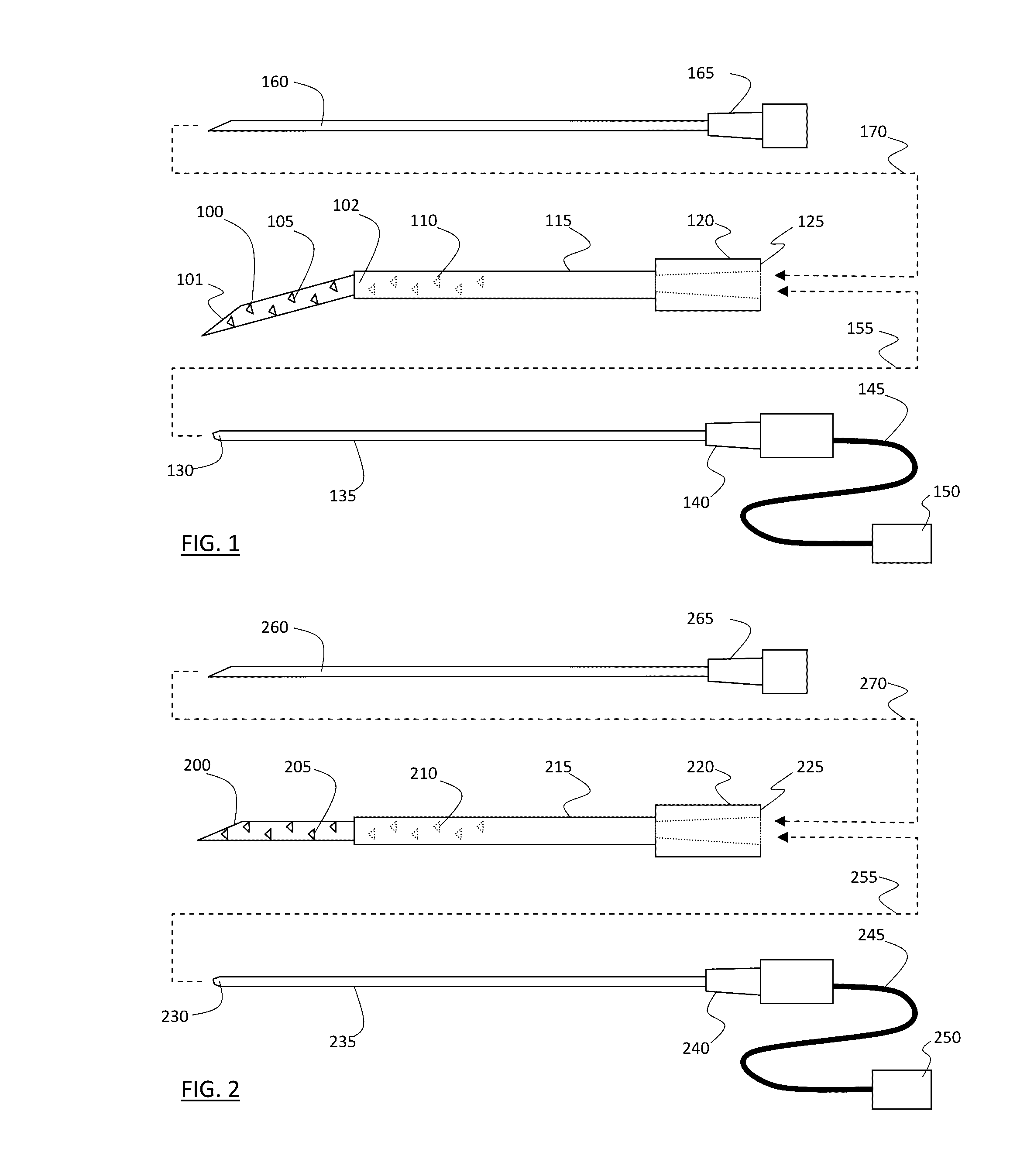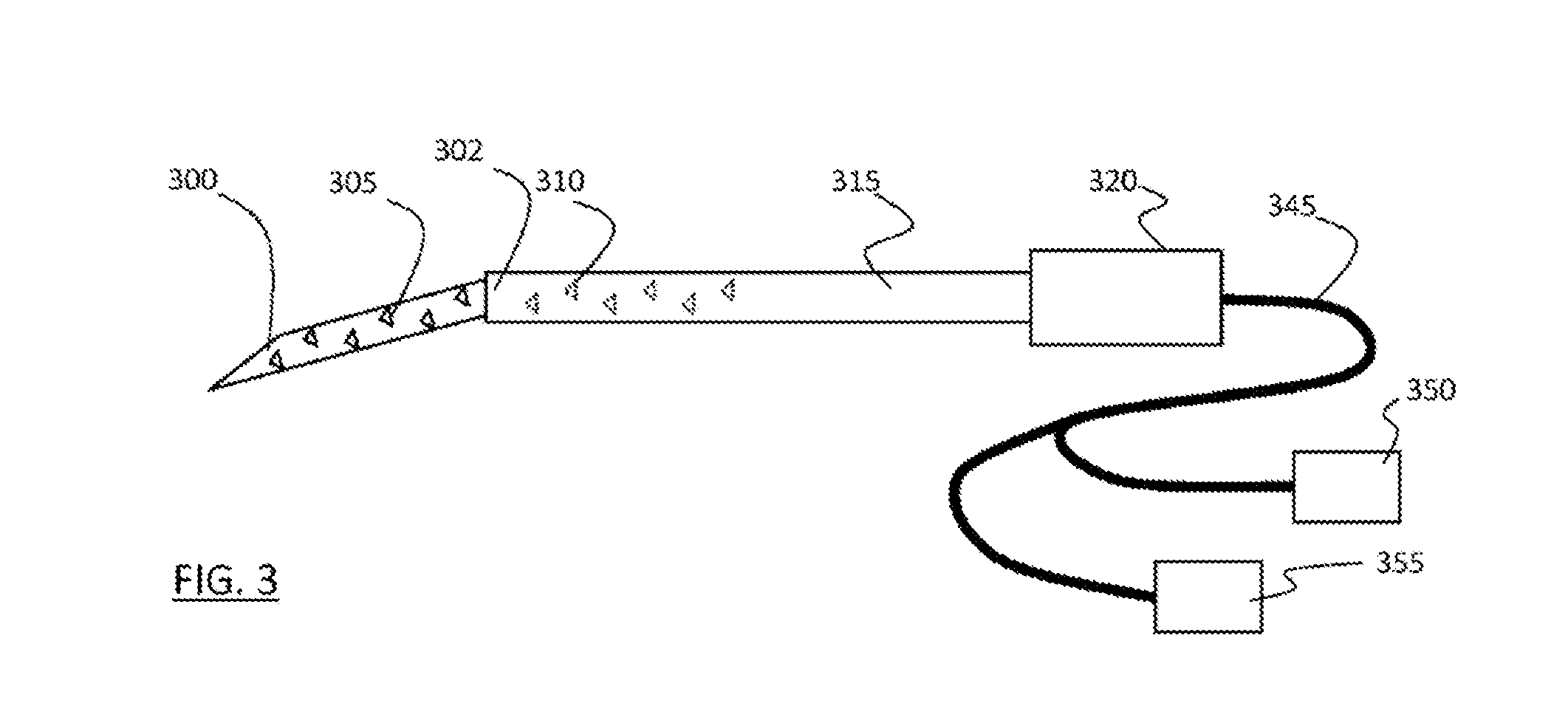Echogenic probe
a technology of echogenic probes and probes, applied in the field of echogenic probes, can solve the problems of not including echogenic markers, rf cannulae, and shafts that are not curved, and achieve the effect of easy visualization and directed, and easy visualization and directed
- Summary
- Abstract
- Description
- Claims
- Application Information
AI Technical Summary
Benefits of technology
Problems solved by technology
Method used
Image
Examples
Embodiment Construction
[0048]Referring to FIG. 1, a needle with shaft 100 is shown. The shaft 100 be substantially cylindrical. The needle can be hollow with an inner lumen. The inner lumen of the shaft 100 can open to the outside via a hole in the tip of the shaft 100 or holes along the shaft. The needle has a sharpened distal end, and is terminated by hub 120 at its proximal end. The needle can configured to penetrate biological tissue, such as the skin's surface, soft tissue around the spine, visceral organs, limbs, muscles, blood vessels, the liver, the kidney, the prostate, and other human and animal tissues. The needle's distal end can have a bevel 101. The needle can be a biopsy needle. The needle's distal end 101 can have a tissue-piercing geometry, such as a chiba tip. The needle's distal end 101 can have a rounded tip and stiff shaft capable of piecing tissue. The needle's distal end 101 can have an epidural geometry, such as a tuohy tip. The needle can be radiofrequency cannula. The needle can ...
PUM
 Login to View More
Login to View More Abstract
Description
Claims
Application Information
 Login to View More
Login to View More - R&D
- Intellectual Property
- Life Sciences
- Materials
- Tech Scout
- Unparalleled Data Quality
- Higher Quality Content
- 60% Fewer Hallucinations
Browse by: Latest US Patents, China's latest patents, Technical Efficacy Thesaurus, Application Domain, Technology Topic, Popular Technical Reports.
© 2025 PatSnap. All rights reserved.Legal|Privacy policy|Modern Slavery Act Transparency Statement|Sitemap|About US| Contact US: help@patsnap.com



